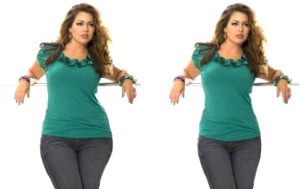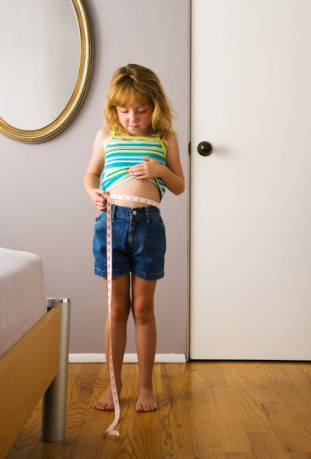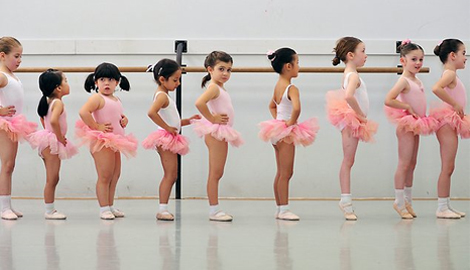Role model: How you feel about your body has direct impact on how your daughter will feel about hers. If you are constantly trying to change your body and expressing frustration, dislike, or criticism about your appearance, you are sending a message to your daughters that bodies are to be judged and conformed rather than accepted, loved, and appreciated. Though your feelings are often modeled in very subtle ways, they may not be imperceptible to your daughter. She will notice when you sigh or make a face while looking at yourself in a mirror; when you dismiss a complement; when you say “Oh, I shouldn’t have eaten that!” She will notice whom you describe as beautiful and whom you don’t. She will remember when you express longing for the flat stomach, firm thighs, or slender build of a friend, a stranger, that woman in the magazine. If you struggle with your own body image, be mindful of how much this seeps into your interactions with, and around, your daughter.
Appreciate rather than evaluate: We live in a society that objectifies and evaluates bodies using a narrow and unattainable definition of beauty. We need to teach our daughters that they can view their bodies through a different lens. Rather than a lens of evaluation, create one of appreciation. Help your daughter identify what she appreciates about her body. Viewing her body through the lens of appreciation means your daughter can appreciate what her body can do rather than what it looks like. She will appreciate her uniqueness, and she will not need to compare herself to some ideal image.
This appreciation process can start as early as preschool and can continue into adulthood. Start early with identifying the power, strength, and ability in your daughter’s body. For daughters in preschool, introduce this lens of appreciation by giving them a way to recognize what their bodies can do: Look how strong your legs are; you can jump so high! Look how fast you can run! You can move your body to the music. Replace some of the “You are so pretty” commentary directed at your daughter with “Look what your body can do” language. As your daughter moves into elementary school, expand and solidify the lens of appreciation by starting a daily body appreciation ritual. Each day, express something you both appreciate about your body — i.e., that you can use it to ride your bike, that you can dance and do karate, that you love your curly hair or freckles. It can be a bedtime ritual or something your daughter writes in a journal each day and then reads to you.
Counter the media culture: For an eye-opening depiction of how girls and women are portrayed in the media, check out the film Miss Representation. This documentary illustrates not only the harm being done by the media’s emphasis on women’s appearances and unattainable standards of beauty, but also on how the media’s misrepresentations of women have led to their underrepresentation in positions of power and influence.
 |
| Before Photoshop After Photoshop |




